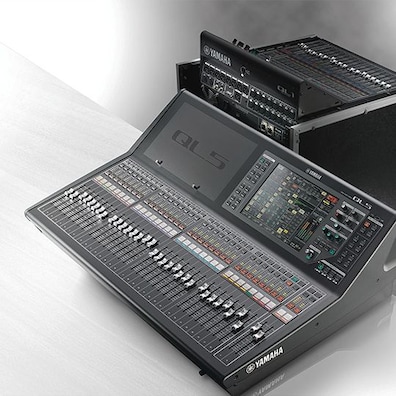Broadcast To A Billion: Yamaha Consoles Feature At Nobel Peace Prize Ceremony
The Nobel Peace Prize is probably the highest profile and best known honour in the world, bestowed since 1901 on those who have made an outstanding contribution to peace between people and nations. The 2014 award ceremony took place on 10th December in Oslo City Hall, Norway, with Yamaha CL5 and QL1 digital mixers entrusted to mix the prestigious event, broadcast live to an audience estimated at one billion.

Over the years, the Nobel Peace Prize has been presented to many of the world’s most foremost statesmen and women, but it also recognises less well-known figures. This year the award was to children’s rights activist Kailash Satyarthi and Pakistani schoolgirl Malala Yousafzai, the youngest ever Nobel laureate.
The event’s mix engineer Bernt Austad has used Yamaha digital consoles since 1995. “I choose them because of their stability, they never crash or need rebooting - and I really don't need to reboot when one billion people are listening!” he says.
“In addition, the artists who performed at this year’s ceremony - including some of Bollywood’s biggest stars - also recommended Yamaha as their first choice.”
Bernt worked closely with Håkon Aarøen, audio engineer for Norwegian state broadcaster NRK, and Oslo City Hall engineer Erik Bergersen. The most important part of the ceremony’s audio production is clarity of speech, so he used two specially-developed DPA podium microphones - one phantom powered by the television buss, the other by the CL5 for insurance. Two Rio3224-D i/o units received the input signals, which were split from the television feed to the CL5, which mixed both house and monitor sound, and the QL1 which acted as a clone/backup.

Bernt has worked on events in Oslo City Hall for many years, its reverberant space meaning that one of his biggest challenges for the ceremony was to deliver high quality sound for the audience in the venue and clear monitoring for the participants, while still keeping it tight and clean for the global television coverage.
“As a very difficult space to tame, I used the effects and filters in the consoles extensively, especially the Rupert Neve Portico compressors, plus the filters, EQ and delay on the outputs to tune the room,” says Bernt. “The StageMix iPad app was incredibly useful, enabling me to really finely tune the monitoring without having to be at the consoles.”
Bernt daisy-chained the R-series i/o units, so both Yamaha mixing systems worked independently, the setup on the CL5 being copied to the QL1 via a USB stick and both mixers outputs combined to the PA. In doing so, he could be 100% confident that there was no chance of any problems with the audio.
“As expected, all of the Yamaha equipment was very stable and everybody involved was very happy with the sound,” says Bernt. “The Nobel committee had several complaints about the PA work in earlier years so, unknown to me, two years ago they came to the presentation of the scientific Kavli prize, which I have used Yamaha equipment on for 10 years,” he says. “Afterwards I was invited to a meeting, where I was expecting a complaint… but instead got the audio job for the Nobel Peace Prize!”


